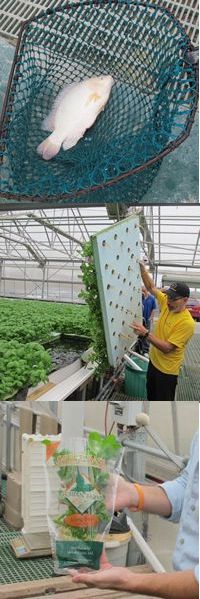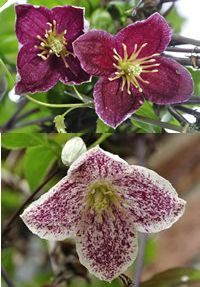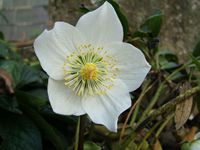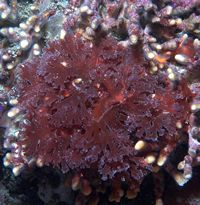1 Dec 2011
We have added two new 'Associations' to our 'stable'. Firstly we are now supporting Grow Careers, a website aimed at promoting careers in all aspects of the horticulture industry (see 'News from our Associates').
Secondly we have agreed to support the EU led 'Fascination of Plants Day' being held on 18 May 2012. The goal of this activity is to get as many people as possible around the world fascinated by plants and enthused about the importance of plant science for 
Earlier this year Chris Moncreiff of VHB Herbs travelled to the USA on a study tour and below he reports on an unusual instance of double cropping.
Editor
A Fishy Business
Herban farms is located on the grounds of Cheyney University in the state of Pennsylvania, USA. The small nursery is founded and run by Mike Derro who designed and built the facility with the assistance of the University. The facility fulfils two main aims; to provide a unique teaching resource for the students of the University whilst providing a business opportunity for Mike and his colleagues to grow and sell both fish and basil (Ocimum basilicum). Not a combination you often see in a restaurant, but certainly working here!

The system is based upon a series of tanks with flotation rafts for the basil and separate tanks for the fish. High density polystyrene is used for the rafts with water approx 6in (15cm) deep in the basil production area - apologies for inches but it was America after all. The water temperature is kept at 78o - 80o F (25oC) to cater for the fish; a type of Tilapia (picture top right) . This warm water loving fish and is particularly sought after by the Asian communities. The waste products excreted by the Tilapia provide the nutrients for the plants. Earlier work had confirmed that Tilapia provide a better concentration and make up of nutrient than other fish species trialled. Mike considered it to be very high in nitrogen.
The basil is grown from seed placed on an Oasis cube which are germinated away from the tanks in a dedicated germination area before being transplanted into the rafts. The growth of the basil looked very good with a good colour in what was a very comfortable growing area; maybe a little too comfortable! The tanks contain some 36,000 gallons (136,000 litres) of nutrient-rich water and the owner stated that natural filtration is provided by having the fish in the water.
It is key to note that the fish are in a separate tank from the basil. Tilapia are mainly vegetarian and sometimes introduced into water courses to clear them of weeds. Basil roots (shown centre right) would not last long if the fish were in the same tank and clearly this would be an unsustainable part of the process if allowed to happen! Mike pointed out that the fish often jump across to get in amongst the basil or, when small enough, escape through the system in some way so they have to keep checking for fish in the main growing area and shepherding them back to their own tanks.
The owners stated that following bacterial testing for due diligence proposes they had been really pleased when no bacterial issues were found. However, I have to say personally that growing basil in a nutrient rich solution of fish waste is not something I would find conducive to a good night's sleep!
In setting the system up the fish arrive first and are allowed to develop for 6 weeks to build up the nutrient level in the solution and create a balance for the fish as well. The fish themselves are ready in about 9 months and restocking of the tanks is automatic as the fish breed and population control is essential. Each fish weighs about 4lbs (2kg) and they were achieving prices of $2.5 - 3.00/ lb ($5-6/kg).
The unit was very small in scale but the idea of combining two very different farming ideas to produce two products that 'feed' off each other was fascinating. It could take off and there are some larger units springing up but my sleep is important to me and it needs to develop a bit more before I 'plunge' in.
Chris Moncrieff, VHB Herbs
Plant of the Month
Clematis cirrhosa, Ranunculaceae

The other cultivar Clematis cirrhosa var. balearica 'Freckles' (pictured bottom right) is growing up against the back of our house (facing south-east) intermingling with a much later flowering Clematis and it too is in bloom now.
These plants prefer full sun and are reported to be frost hardy ie hardy down to -5° C. Mine have both come through the past two winters unscathed and have coped with temperatures down to -10° C. There are approximately 300 species of Clematis all from the Northern temperate zone and most are lianas (climbers) although some are shrubby or herbaceous.
Clematis are in the buttercup family, Ranunculaceae, along with a large number of other garden worthy plants. They contain toxic alkaloids and so should not be ingested. In Clematis the calyx is coloured and petal like and the corolla is absent. Unusually for Ranunculaceae the leaves are opposite (they are alternate in all other genera of this family). The name clematis comes from the Greek klematis for various climbing plants. Cirrhosa is nothing to do with liver disease but means equipped with tendrils.
Alison Foster, Oxford Botanic Garden
Medicinal Plant of the Month
Helleborus niger , Ranunculaceae, Christmas rose

A list of plants survives that was written down in 995 by Aelfric Bata under the guidance of his tutor, Aelfric of Eynsham. It comprises a long list of garden plants and on this list it was noted that Helleborus niger was used for mania and melancholy. By the 1500's it was use to treat gout, jaundice, sciatica and even leprosy. Still used as a medicine in the 18th century, one horseman's notebook states 'For the itch in a Christain take two peneworth of Black Elebore Powder and 4 peneworth of red Precipitate powder mixed with Pork Lard and rub your joints with the same.'
We know today that in common with other members of the Ranunculaceae that the black hellebore contains steroidal sapogenins and cardiac glycosides such as ranuncoside.
 |
 |
| a steroidal saponin isolated in 1971 (Helvetica Chimica Acta, 54, 6, 181-182, p1703) | ranuncoside, a glycoside |
Extract of black hellebore is used sometimes in Germany as an adjuvant treatment for some types of tumour. Research has shown that the extract does indeed induce apoptosis (programmed cell death) of cells in particular in blood cancers. The journal Paediatric Blood and Cancer reports 'In primary cells of patients with childhood ALL (Acute lymphoblastic leukaemia) and AML (Acute myeloid leukaemia), which were partly poor responding to doxorubicin and daunorubicin, a strong apoptosis induction was determined. In combination with the vinca alkaloid vincristine, strong synergistic effects were detected in BJAB cells (a Burkitt's lymphoma cell line)'.
Alison Foster, Oxford Botanic Garden
News from our Associates
Grow Careers

Fascination of Plants Day - 18 May 2012

The 'Fascination of Plants Day' has been already adopted by more than 25 countries worldwide and the number is growing. More than 60 scientific institutions, universities, botanical gardens, and museums, together with farmers and companies, have already announced that they will open their doors, with a variety of plant-based events for all interested people from toddlers to grandparents. We are delighted to join that number. More
National Horticultural Forum

Society of Biology
The Society develops policy on a wide range of issues. Current issues of interest include biodiversity, biofuels, climate change, ecosystem services, 
Horticulture Industry News
For the very latest horticultural news follow us on Facebook and or
Twitter.
Bugle (Ajuga) can stop pests moulting
Ecdysteroids are steroid hormones that control moulting and govern several changes during metamorphoses in arthropods. Many representatives of the genus Ajuga contain phytoecdysteroids exhibiting physiological activities in insects. Results published in Pest Management Science demonstrate considerable efficacy of these natural phytoecdysteroids against major agricultural pests, and suggests that these materials should be considered for potential development of friendly control agents. More
Physiological age at harvest regulates postharvest ripening of mango
An article in this month's Journal of the Science of Food and Agriculture shows that the ripening ability of mango fruit is acquired on the tree and defines its postharvest changes. The control of the physiological age at harvest can thus minimise the variability in postharvest ripening observed under natural conditions and guarantee fruit batches whose postharvest changes will be relatively homogeneous. More
Human-induced fires sow the seeds of the future
Scientists working in a region of Chile where natural fires are rare have shown that man-made fires accelerate seed adaptations in plants. Using Helenium aromaticum, a native annual herb they showed that regular man-made fire altered natural populations by selecting more pubescent, thicker coated and less rounded seeds. More
Salmonella can reach tomato fruits through leaves
A team from the University of Florida briefly dipped one leaf from each of 84 tomato plants into a solution containing high concentrations of Salmonella, plus a surfactant commonly used by tomato growers. Another 42 plants were left as a control group. In the study's first phase, nine tomatoes from one inoculated plant tested positive for Salmonella.
In the second, Salmonella was found in adjacent, non-inoculated leaves from eight tomato plants; as well as 12 tomatoes from two plants that were leaf-inoculated with a different strain of Salmonella. The researchers described this experiment as a 'worst-case scenario,' saying the findings suggest tomato growers and packers should continue to review their already-stringent safety standards. More
Trees photosynthesise better on cloudy days
The ability of trees to adapt to light conditions, and even increase their intake of carbon in poor light, has been explored by Czech researchers. The team analysed the net carbon intake of a spruce forest under both cloudy and sunny skies. This was coupled with a study of the leaf chlorophyll within different sections of the canopy to gauge the resulting levels of photosynthesis. The results showed that the higher diffusion of sunlight during cloudy days did result in a higher uptake of carbon across the ecosystem when compared to the same levels of light on sunny days. Leaves lower in the canopy photosynthesised more on cloudy days and more than made up for lower photosynthesis at the top of the canopy. More
Why red algae are better at photosynthesis

New plant chloroplast gene could improve photosynthesis
Plant chloroplasts multiply by a process similar to cell division. It is important that new chloroplasts are free to move around to maximise photosynthesis and ensure uniform distribution as the cell divides. Researchers at Michigan State University have identified a gene, CLMP1, that is critical in ensuring that a dividing chloroplast separates completely into two new chloroplasts. Since there are a number of genes closely related to CLMP1 this opens up the possibility of improving the process still further. More
How parasites modify plants to attract insects
Scientists from the John Innes Centre have identified for the first time a specific molecule from a parasite that manipulates plant development to the advantage of the insect host. Leaf hoppers are tiny sap-sucking, highly mobile and opportunistic agricultural pests which can acquire and transmit plant pathogens including viruses and phytoplasmas, which are small bacteria. They found that a protein effector SAP11 reduces the production of a defence hormone in the plant that is used against the leafhopper. As a consequence, leafhoppers reared on plants infected with a 'witch's broom' phytoplasma laid more eggs and produced more offspring. The leafhoppers may also be attracted to lay eggs in the bunched branches and stems. More
UV-B gives carrots an antioxidant boost
Scientists have known for at least a decade that exposing plants to UV-B may cause what's known as 'abiotic stress.' Plants respond to abiotic stress by revving up their production of two natural enzymes, polyphenylalanine ammonia-lyase and chalcone synthase. As production of those enzymes increases, levels of antioxidant phenolics, compounds synthesised by the enzymes, also increase. Californian researchers suggest that a moderate, 14-second dose of UV-B can boost fresh, sliced carrots' antioxidant capacity by about threefold. The dose is energy-efficient and does not significantly heat or dry the carrots. More
Field margins help control weed dispersal
Grass strips on field edges do not result in more weeds growing among crops, research has shown. Previously, it was argued that the 'set aside' land could act as a reservoir for weeds that potentially result in the plants being dispersed into fields. Now a team from the French National Institute for Agricultural Research (INRA) have surveyed the composition of plant species within five-metre of sown grass strips in 10 fields and found the set-aside land resulted in a 'sharp decrease' in the number of weeds encroaching into the cropped area. More
Quotes of the Month
'How quick come the reasons for approving what we like!'
Jane Austen
Other Events of Interest
National Landscape Awards
2 Dec, British Association of Landscape Industries
London, UK
Quality Management in Supply Chains of Ornamentals
3 - 6 Dec, International Society for Horticultural Science
Bangkok, Thailand
Postharvest Quality Management of Root and Tuber Crops
3 - 6 Dec, International Society for Horticultural Science
Bangkok, Thailand
Postharvest Pest and Disease Management in Exporting Horticultural Crops
3 - 6 Dec, International Society for Horticultural Science
Bangkok, Thailand
Quality Management in Postharvest Systems
3 - 6 Dec, International Society for Horticultural Science
Bangkok, Thailand
Cashew Nut
9 - 12 Dec, International Society for Horticultural Science
Madurai, India
Medicinal and Aromatic Plants
15 - 18 Dec, International Society for Horticultural Science
Chiang Mai, Thailand
Vegetable Nutrition and Fertilization: Vegetable Farms Management Strategies for Eco-Sustainable Development
19 - 22 Dec, International Society for Horticultural Science
Giza, Egypt
Tropical and Subtropical Fruits
19 - 22 Dec, International Society for Horticultural Science
Chiang Mai, Thailand
Papaya
19 - 22 Dec, International Society for Horticultural Science
Chiang Mai, Thailand
International Symposium on Orchids and Ornamental Plants
9 - 13 Jan, International Society for Horticultural Science
Chiang Mai, Thailand
International Advances in Pesticide Application
10 - 12 Jan, Association of Applied Biologists
Wageningen, The Netherlands
All Africa Horticultural Congress
15 - 20 Jan, International Society for Horticultural Science
Skukusa, South Africa
Brassica Growers Association Conference and Exhibition
17 Jan, Brassica Growers Association
Grange-de-Lings, UK
New research into plant colour production
19 Jan, Bristol Botanic Garden
Bristol, UK
Harrogate Week
22 - 26 Jan, British and International Golf Greenkeepers Association
Harrogate, UK
International Symposium on Banana
23 - 26 Jan, International Society for Horticultural Science
Chiang Mai, Thailand
A Garden for a Thousand Years
26 Jan, Oxford Botanic Garden
Oxford, UK
Managing Pesticides in Fresh Produce
31 Jan, Practical Solutions International
Arundel, UK
The Gardens of Singapore
9 Feb, Oxford Botanic Garden
Oxford, UK
Bacterial Diseases of Stone Fruits and Nuts
14 - 17 Feb, International Society for Horticultural Science
Zurich, Switzerland
Early spring flowering perennials
16 Feb, Bristol Botanic Garden
Bristol, UK
International Strawberry Symposium
18 - 22 Feb, International Society for Horticultural Science
Beijing, China
Quality Management in Postharvest Systems
21 - 24 Feb, International Society for Horticultural Science
Bangkok, Thailand
Quality Management in Supply Chains of Ornamentals
21 - 24 Feb, International Society for Horticultural Science
Bangkok, Thailand
Postharvest Pest and Disease Management in Exporting
21 - 24 Feb, International Society for Horticultural Science
Bangkok, Thailand
Postharvest Quality Management of Root and Tuber Crops
21 - 24 Feb, International Society for Horticultural Science
Bangkok, Thailand
Gardening is happiness-window boxes to the president of the RHS
23 Feb, Oxford Botanic Garden
Oxford, UK
Grower of the Year Awards
23 Feb, Haymarket Media
London, UK
World Food Technology and Innovation Forum
29 Feb - 1 Mar, World Trade Group
Dublin, Ireland
- If you would like to advertise a forthcoming event please contact. alan.newman@soci.org
Horticulture Group Contact Details
For submitting ideas or to volunteer to be part of a committee or a group, please contact:
Chairman - Peter Grimbly
Meetings Secretary - Alison Foster
Minutes Secretary - Margaret Waddy
Newsletter co-ordinator - Sue Grimbly scihortigroup@btinternet.com
Group Coordinator - Alan Newman alan.newman@soci.org T: +44(0)20 7598 1594
